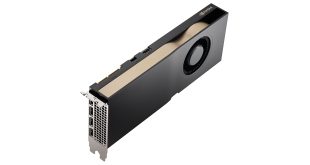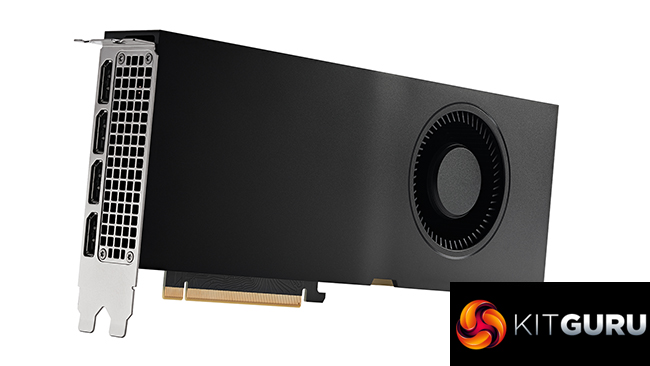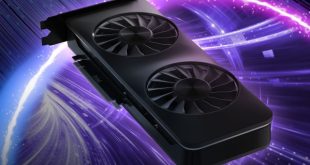
Although AMD has made huge inroads into the workstation CPU market, it still hasn't had the same success where graphics acceleration is concerned. NVIDIA continues to rule the workstation GPU roost. Since the release of the Ampere-generation RTX Ax000 series, NVIDIA has launched Ax500 models that widen the range. We took at a look at the mainstream NVIDIA RTX A4500 from PNY and ask the question: should you upgrade from the A4000?
The first thing we should mention is that NVIDIA has dropped the Quadro branding with the Ampere professional GPUs. There's an Ada generation just emerging, too, but that is only available with the top-end 6000 model so far. As its number suggests, the A4500 sits between the A4000 and A5000. However, where the A4000 uses NVIDIA's GA104 GPU, the A4500 uses the GA102 like the A5000. That means the GPU is related to the NVIDIA GeForce RTX 3080, where the A4000 is related to the GeForce RTX 3070 Ti.
In terms of specification, the A4500 unsurprisingly sits between the A4000 and A5000. However, it's a little more like the A5000, with a faster base and boost GPU clock, faster memory, and a wider bus width. The memory allocation also sits precisely in between the two other models.
The key thing, however, is that while the A5000 is almost £1,000 more than the A4000, the A4500 is only £300 more. That means it could be exactly what you need if the A4000 is just that little bit underpowered but you don't have an extra grand in your budget. So exactly how much more performance do you get for the extra £300? We ran the A4500 against the A4000 with a suite of professional workloads. Read on to discover what we learned.
| GPU | PNY NVIDIA RTX A4000 |
PNY NVIDIA RTX A4500 | PNY NVIDIA RTX A5000 |
| RT Cores |
48 | 56 | 64 |
| Tensor Cores |
192 | 224 | 256 |
| CUDA Cores |
6,144 | 7,168 | 8,192 |
| GPU Architecture / Variant | GA104 | GA102 | GA102 |
| Base Clock | 735 MHz | 1,170 MHz | 1,170 MHz |
| GPU Boost Clock | 1,560 MHz | 1,695 MHz | 1,695 MHz |
| Total Video memory | 16 GB GDDR6 | 20 GB GDDR6 | 24 GB GDDR6 |
| Memory Clock (Effective) |
1,750 (14,000) MHz | 2,000 (16,000) MHz | 2,000 (16,000) MHz |
| Memory Bandwidth | 448 GB/sec | 640 GB/sec | 768 GB/sec |
| Bus Width | 256-bit | 320-bit | 384-bit |
| Manufacturing Process | 8nm | 8nm | 8nm |
| TDP | 140 W | 200 W | 230 W |
| Display Outputs | 4 x DisplayPort 1.4 | 4 x DisplayPort 1.4 | 4 x DisplayPort 1.4 |
| Display Resolution |
4 @ 1920×1080
4 @ 3840×2160
4 @ 5120×2880
1 @ 7680×4320
(all at 60Hz)
|
4 @ 1920×1080
4 @ 3840×2160
4 @ 5120×2880
1 @ 7680×4320
(all at 60Hz)
|
4 @ 1920×1080 4 @ 3840×2160 4 @ 5120×2880 1 @ 7680×4320 (all at 60Hz)
|
| Software API Support | DirectX 12, OpenGL 4.6, OpenCL 3.0, Vulkan 1.3 | DirectX 12, OpenGL 4.6, OpenCL 3.0, Vulkan 1.3 | DirectX 12, OpenGL 4.6, OpenCL 3.0, Vulkan 1.3 |
PNY NVIDIA RTX A4500 Retail Price: £1,439.99
Be sure to check out our sponsors store EKWB here
 KitGuru KitGuru.net – Tech News | Hardware News | Hardware Reviews | IOS | Mobile | Gaming | Graphics Cards
KitGuru KitGuru.net – Tech News | Hardware News | Hardware Reviews | IOS | Mobile | Gaming | Graphics Cards



